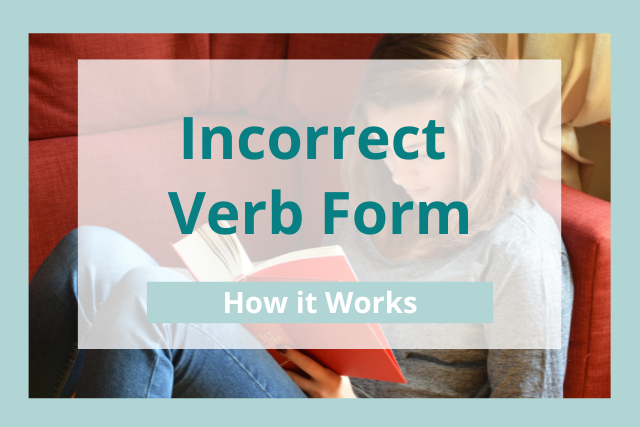
English verbs can be confusing. We not only have many irregular verbs, we also have several verb tenses and moods.
Many of these verb forms require more than one word to construct, which makes finding the correct verb form difficult.
Here is what you should consider when finding the correct verb form:
- the tense (past, present, or future)
- the aspect (simple, perfect, continuous, perfect continuous)
- the mood (indicative, imperative, subjective, or conditional)
- the subject for subject-verb agreement
- the past and present participles
Some sources call aspects different tenses, which means English has 12–16 tenses. Other sources say there are only three tenses: past, present, and future.
The rest are aspects and moods. We'll look at each of these in more detail, so you can learn how to find the correct verb form.
You also need to know the past participles, present participles, and infinitives for different verb forms. The past participle is sometimes the same as the past tense, but not always. The present participle ends in -ing. The infinitive is preceded by the word to.
Present Tense
The present tense refers to things happening currently. There are four aspects for this tense.
Simple Present
This talks about things happening right now and uses the base form of most verbs. The structure for simple present is: subject + verb.
In the simple present, subject–verb agreement is very important. For regular verbs, you add an -s or -es to the base form for third-person singular.
Irregular verbs may look completely different. For instance, be is conjugated as I am, you are, he/she/it is, we are, they are.
Example: I run.
Present Continuous
Present continuous, also known as present progressive, is used to describe things that are ongoing. Present continuous is structured: subject + be + present participle. Again, it's important to make sure the form of be agrees with the subject.
Example: I am running.
Present Perfect
The present perfect tense actually talks about things in the past. It refers to things that have happened at a point before the present. The structure of present perfect is subject + has/have + past participle.
Make sure that you only use has for third-person singular subjects; otherwise, use have. The past participle of a word can be found in any dictionary entry.
Example: I have run.
Present Perfect Continuous
This tense refers to things that have happened in the past and are still happening. The structure is subject + has/have been + present participle.
Again, make sure that you use the correct form of has or have depending on the subject. The present participle is constructed by the root of the verb + -ing.
Example: I have been running.
Past Tense
The past tense talks about things that have occurred before the present. This tense has the four same aspects as the present tense.
Simple Past
The simple past is for something that occurred in the past and was not ongoing. This uses the past tense form of the verb. For regular verbs, this means it ends in -d or -ed.
But there are many irregular verbs. For example, the past tense of go is went, and the past tense of be is was or were, depending on the subject.
The structure of the simple past is subject + past tense verb.
Example: I ran.
Past Continuous
Past continuous refers to things that were ongoing in the past or were happening at a specific moment. It is constructed as subject + was/were + present participle. Only use was for first-person singular and third-person singular.
Example: I was running.
Past Perfect
To talk about things that happened further back in the past, use the past perfect or pluperfect tense. This is constructued by subject + had + past participle.
Example: I had run.
Past Perfect Continuous
Past perfect continuous describes things that were ongoing from one point in time until another. Use the structure subject + had been + present participle.
Example: I had been running.
Future Tense
We use the same four aspects to talk about the future.
Simple Future
This is one of the easiest verb tenses. We can talk about the future by using the structure subject + will + root verb. The root verb is the basic form of the verb that you use in the simple present.
Example: I will run.
Future Continuous
The future continuous tense is used to describe action verbs that will be ongoing or occurring at a specific moment. The structure is subject + will be + present participle.
Example: I will be running.
Future Perfect
The future perfect refers to events that will have occurred by a specific point in time. The structure is subject + will have + past participle.
Example: I will have run.
Future Perfect Continuous
The future perfect continuous describes events that will have occurred continuously by a certain point. It's almost like imagining you are in the future looking back in time. The structure is subject + will have been + present participle.
Example: I will have been running.
